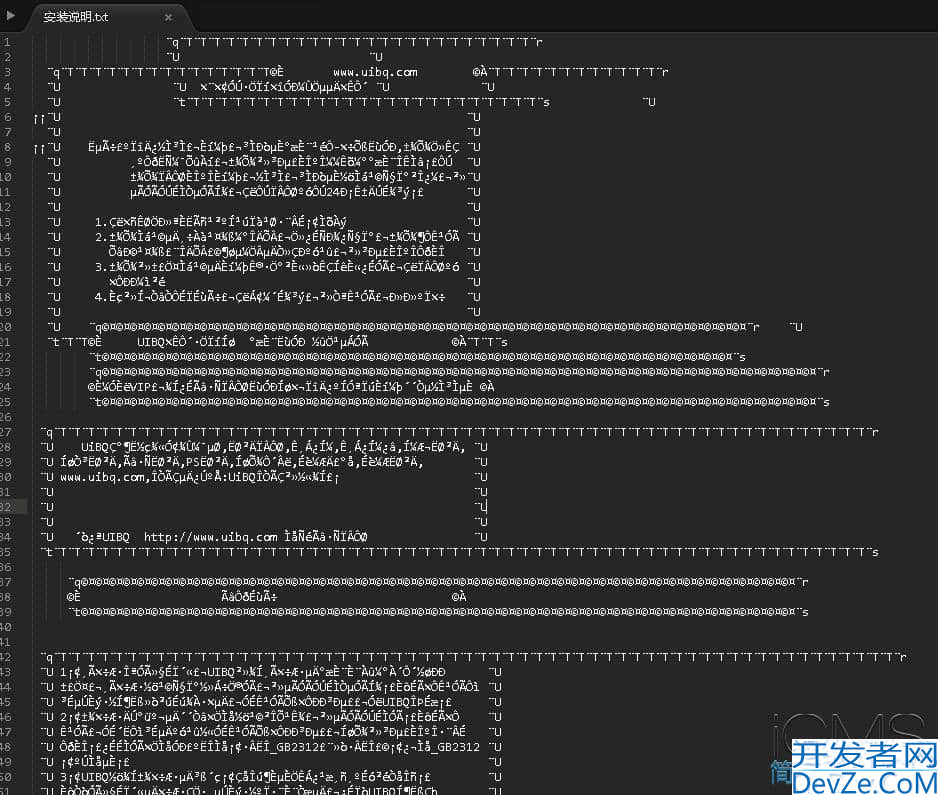Go语言利用heap实现优先级队列
目录
- 1. heap使用
- 2. heap提供的方法
- 3. heap源码剖析
- 4. 利用heap实现优先级队列
1. heap使用
在go语言的标准库container中,实现了三中数据类型:heap,list,ring,list在前面一篇文章中已经写了,现在要写的是heap(堆)的源码剖析。
首先,学会怎么使用heap,第一步当然是导入包了,代码如下:
package main import ( "container/heap" "fmt" )
这个堆使用的数据结构是最小二叉树,即根节点比左边子树和右边子树的所有值都小。源码里面只是实现了一个接口,它的定义如下:
type Interface interface {
sort.Interface
Push(x interface{}) // add x as element Len()
Pop() interface{} // remove and return element Len() - 1.
}
从这个接口可以看出,其继承了sort.Interface接口,那么sort.Interface的定义是什么呢?源码如下:
type Interface interface {
// Len is the number of elements in the collection.
Len() int
// Less reports whether the element with
// index i should sort before the element with index j.
Less(i, j int) bool
// Swap swaps the elements with indexes i and j.
Swap(i, j int)
}
也就是说,我们要使用go标准库给我们提供的heap,那么必须自己实现这些接口定义的方法,需要实现的方法如下:
- Len() int
- Less(i, j int) bool
- Swap(i, j int)
- Push(x interface{})
- Pop() interface{}
实现了这五个方法的数据类型才能使用go标准库给我们提供的heap,下面简单示例为定义一个IntHeap类型,并实现上面五个方法。
type IntHeap []int // 定义一个类型
func (h IntHeap) Len() int { return len(h) } // 绑定len方法,返回长度
func (h IntHeap) Less(i, j int) bool { // 绑定less方法
return h[i] < h[j] // 如果h[i]<h[j]生成的就是小根堆,如果h[i]>h[j]生成的就是大根堆
}
func (h IntHeap) Swap(i, j int) { // 绑定swap方法,交换两个元素位置
h[i], h[j] = h[j], h[i]
}
func (h *IntHeap) Pop() interface{} { // 绑定pop方法,从最后拿出一个元素并返回
old := *h
n := len(old)
x := old[n-1]
*h = old[0 : n-1]
return x
}
func (h *IntHeap) Push(x interface{}) { // 绑定push方法,插入新元素
*h = append(*h, x.(int))
}
针对IntHeap实现了这五个方法之后,我们就可以使用heap了,下面是具体使用方法:
func main() {
h := &IntHeap{2, 1, 5, 6, 4, 3, 7, 9, 8, 0} // 创建slice
heap.Init(h) python// 初始化heap
fmt.Println(*h)
fmt.Println(heap.Pop(h)) // 调用pop
heap.Push(h, 6) // 调用push
fmt.Println(*h)
for len(*h) > 0 {
fmt.Printf("%d ", heap.Pop(h))
}
}
输出结果:
[0 1 3 6 2 5 7 9 8 4]
0[1 2 3 6 4 5 7 9 8 6]1 2 3 4 5 6 6 7php 8 9
上面就是heap的使用了。
2. heap提供的方法
heap提供的方法不多,具体如下:
h := &IntHeap{3, 8, 6} // 创建IntHeap类型的原始数据
func Init(h Interface) // 对heap进行初始化,生成小根堆(或大根堆)
func Push(h Interface, x interface{}) // 往堆里面插入内容
func Pop(h Interface) interface{} // 从堆顶pop出内容
func Remove(h Interface, i int) interface{} // 从指定位置删除数据,并返回删除的数据
func Fix(h Interface, i int) // 从i位置数据发生改变后,对堆再平衡,优先级队列使用到了该方法
3. heap源码剖析
heap的内部实现,是使用最小(最大)堆,索引排序从根节点开始,然后左子树,右子树的顺序方式。 内部实现的down和up分别表示对堆中的某个元素向下保证最小(最大)堆和向上保证最小(最大)堆。
当往堆中插入一个元素的时候,这个元素插入到最右子树的最后一个节点中,然后调用up向上保证最小(最大)堆。
当要从堆中推出一个元素的时候,先吧这个元素和右子树最后一个节点交换,然后弹出最后一个节点,然后对root调用down,向下保证最小(最大)堆。
好了,开始分析源码:
首先,在使用堆之前,必须调用它的Init方法,初始化堆,生成小根(大根)堆。Init方法源码如下:
// A heap must be initialized before any of the heap operations
// can be used. Init is idempotent with respect to the heap invariants
// and may be called whenever the heap invariants may have been invalidated.
// Its complexity is O(n) where n = h.Len().
//
func Init(h Interface) {
// heapify
n := h.Len() // 获取数据的长度
for i := n/2 - 1; i >= 0; i-- { // 从长度的一半开始,一直到第0个数据,每个位置都调用down方法,down方法实现的功能是保证从该位置往下保证形成堆
down(h, i, n)
}
}
接下来看down的源码:
func down(h Interface, i0, n int) bool {
i := i0 // 中间变量,第一次存储的是需要保证往下需要形成堆的节点位置
for { // 死循环
j1 := 2*i + 1 // i节点的左子孩子
if j1 >= n || j1 < 0 { // j1 < 0 after int overflow // 保证其左子孩子没有越界
break
}
j := j1 // left child // 中间变量j先赋值为左子孩子,之后j将被赋值为左右子孩子中最小(大)的一个孩子的位置
if j2 := j1 + 1; j2 < n && !h.Less(j1, j2) {
j = j2 // = 2*i + 2 // right child
} // 这之后,j被赋值为两个孩子中的最小(大)孩子的位置(最小或最大由Less中定义的决定)
if !h.Less(j, i) {
break
} // 若j大于(小于)i,则终止循环
h.Swap(i, j) // 否则交换i和j位置的值
i = j // 令i=j,继续循环,保证j位置的子数是堆结构
}
return i > i0
}
这是建立堆的核心代码,其实,down并不能完全保证从某个节点往下每个节点都能保持堆的特性,只能保证某个节点的值如果不满足堆的性质,则将该值与其孩子交换,直到该值放到适合的位置,保证该值及其两个子孩子满足堆的性质。
但是,如果是通过Init循环调用down将能保证初始化后所有的节点都保持堆的特性,这是因为循环开始的i := n/2 - 1的取值位置,将会取到最大的一个拥有孩子节点的节点,并且该节点最多只有两个孩子,并且其孩子节点是叶子节点,从该节点往前每个节点如果都能保证down的特性,则整个列表也就符合了堆的性质了。
同样,有down就有up,up保证的是某个节点如果向上没有保证堆的性质,则将其与父节点进行交换,直到该节点放到某个特定位置保证了堆的性质。代码如下:
func up(h Interface, j int) {
for { // 死循环
i := (j - 1) / 2 // parent // j节点的父节点
if i == j || !h.Less(j, i) { // 如果越界,或者满足堆的条件,则结束循环
break
}
h.Swap(i, j) // 否则将该节点和父节点交换
j = i // 对父节点继续进行检查直到根节点
}
}
以上两个方法就是最核心的方法了,所有暴露出来的方法无非就是对这两个方法进行的封装。我们来看看以下这些方法的源码:
func Push(h Interface, x interface{}) {
h.Push(x) // 将新插入进来的节点放到最后
up(h, h.Len()-1) // 确保新插进来的节点网上能保证堆结构
}
func Pop(h Interface) interface{} {
n := h.Len() - 1 // 把最后一个节点和第一个节点进行交换,之后,从根节点开始重新保证堆结构,最后把最后那个节点数据丢出并返回
h.Swap(0, n)
down(h, 0, n)
return h.Pop()
}
func Remove(h Interface, i int) interface{} {
n := h.Len() - 1 pop只是remove的特殊情况,remove是把i位置的节点和最后一个节点进行交换,之后保证从i节点往下及往上都保证堆结构,最后把最后一个节点的数据丢出并返回
if n != i {
h.Swap(i, n)
down(h, i, n)
up(h, i)
}
return h.Pop()
}
func Fix(h Interface, i int) {
if !down(h, i, h.Len()) { // i节点的数值发生改变后,需要保证堆的再平衡,先调用down保证该节点下面的堆结构,如果有位置交换,则需要保证该节点往上的堆结构,否则就不需要往上保证堆结构,一个小小的优化
up(h, i)
}
}
以上就是go里面的heap所有的源码了,我也就不贴出完整版源码了,以上理解全部基于个人的理解,如有不当之处,还望批评指正。
4. 利用heap实现优先级队列
既然用到了heap,那就用heap实现一个优先级队列吧,这个功能是很好的一个功能。
源码如下:
package main
import (
"container/heap"
"fmt"
)
type Item struct {
value string // 优先级队列中的数据,可以是任意类型,这里使用string
priority int // 优先级队列中节点的优先级
index int // index是该节点在堆中的位置
}
// 优先级队列需要实现heap的interface
type PriorityQueue []*Item
// 绑定Len方法
func (pq PriorityQueue) Len() int 编程客栈{
return len(pq)
}
// 绑定Less方法,这里用的是小于号,生成的是小根堆
func (pq PriorityQueue) Less(i, j int) bool {
return pq[i].priority < pq[j].priority
}
// 绑定swap方法
func (pq PriorityQueue) Swap(i, j int) {
pq[i], pq[j] = pq[j], pq[i]
pq[i].index, pq[j].index = i, j
}
// 绑定put方法,将index置为-1是为了标识该数据已经出了优先级队列了
func (pq *PriorityQueue) Pop() interface{} {
old := *pq
n := len(old)
item := old[n-1]
*pq = old[0 : n-1]
item.index = -1
return item
}
// 绑定push方法
func (pq *PriorityQueue) Push(x interface{}) {
n := len(*pq)
item := x.(*Item)
item.index = n
*pq = append(*pq, item)
}
// 更新修改了优先级和值的item在优先级队列中的位置
func (pq *PriorityQueue) update(item *Item, value string, priority int) {
item.value = value
item.priority = priority
heap.Fix(pq, item.index)
}
func main() {
// 创建节点并设计他们的优先级
items := map[string]int{"二毛": 5, "张三js": 3, "狗蛋": 9}
i := 0
pq := make(PriorityQueue, len(items)) // 创建优先级队列,并初始化
for k, v := range items { // 将节点放到优先级队列中
pq[i] = &Item{
value: k,
priority: v,
index: i}
i++
}
heap.I编程nit(&pq) // 初始化堆
item := &Item{ // 创建一个item
value: "李四",
priority: 1,
}
heap.Push(&pq, item) // 入优先级队列
pq.update(item, item.value, 6) // 更新item的优先级
for len(pq) > 0 {
item := heap.Pop(&pq).(*Item)
fmt.Printf("%.2d:%s index:%.2d\n", item.priority, item.value, item.index)
}
}
输出结果:
03:张三 index:-01
05:二毛 index:-0106:李四 index:-0109:狗蛋 index:-01
到此这篇关于Go语言利用heap实现优先级队列的文章就介绍到这了,更多相关Go语言 heap内容请搜索我们以前的文章或继续浏览下面的相关文章希望大家以后多多支持我们!






 加载中,请稍侯......
加载中,请稍侯......
精彩评论